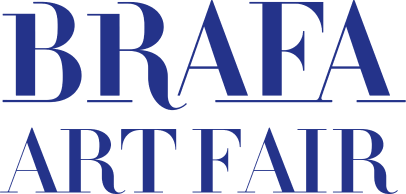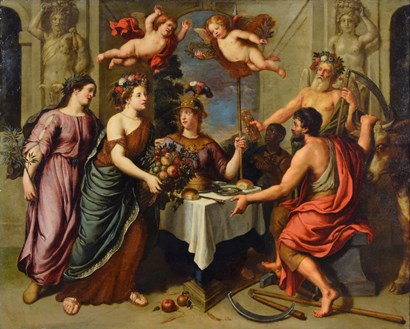This section will be available this Autumn.
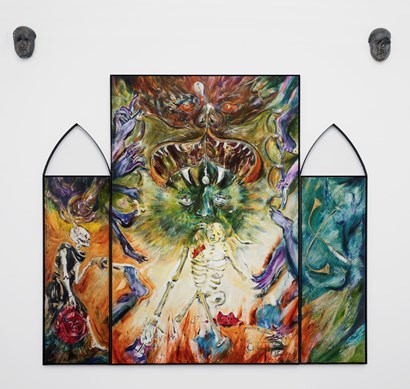
Galerie Nathalie Obadia, Paris/Brussels
joris van de moortel
Joris Van de Moortel (Ghent, 1983) Music enjoys direct access to the soul, has an immediate echo of response since we have music within ourselves, 2025 Oil on linen and artist’s steel frame (3 panels) 200 x 220 cm Provenance: the artist's studio, Belgium Exhibition: Joris Van de Moortel, Le poids du ciel illumine la terre, Galerie Nathalie Obadia, Paris, France, 2025

Galerie Berès
Georges Lemmen (Brussels, 1865-1916) Vue sur l'église de Dudzeele, circa 1891 Oil on panel 16 x 24 cm Monogram lower right GL This work will be included in the forthcoming catalogue raisonné being prepared by Olivier Bertrand Literature: Roger Cardon, Georges Lemmen 1865-1916, Brussels, 1997, 40 p. 104
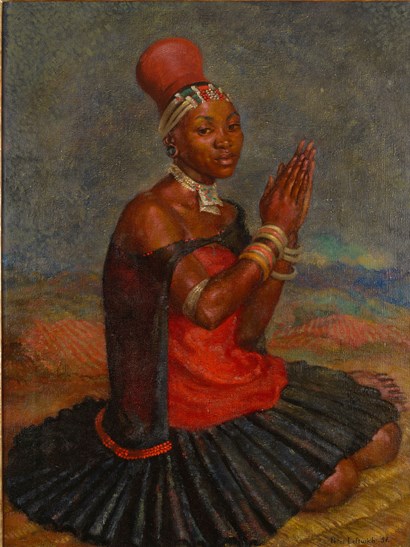
Dr. Nöth kunsthandel
peter leftwich
Peter Leftwich (Great Britain, 1913-?) Bawilele, 1937 Oil and tempera on canvas 102 x 77 cm Signed and dated lower right: Peter Leftwich 37 Verso inscribed on the canvas: No 2 'Bawilele' by Peter Leftwich and on the stretcher Provenance: Otto Rasmussen, Danish director of the East Asiatic Company Exhibition: Capetown, South African National Gallery: Annual Exhibition of Contemporary Art 1937-38, n° 107
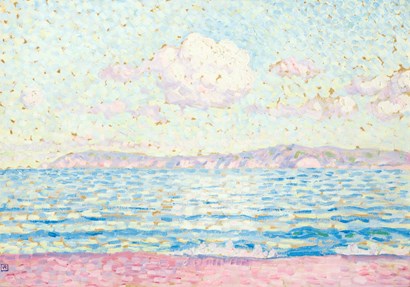
Galerie Raf Van Severen
théo van rysselberghe
Théo Van Rysselberghe (Belgium, Ghent 1862-1926 Le Lavandou, France) Ile du Levant, circa 1904 Oil on panel 30 x 41.4 cm Signed with monogram bottom left Provenance: Foundation Catherine Gide; private collection, Brussels Literature: Feltkamp, 2003, réf. 1924-034, p. 441; Catalogue de l'exposition, Bruxelles, La Haye, 2006, p. 258; Théo Van Rysselberghe, l'instant sublimé, Museé de Lodève, 2012, p. 99; Théo Van Rysselberghe, Intime, 2005, p.65; Théo Van Rysselberghe, Bozar Books by Fonds Mercator & Palais Des Beaux-Arts, Belgian Art Research Institute, 2005, p. 229 Exhibitions: 2005, TVR, Intime, Espace Culturel, Le Lavandou, n° 37; 2006, Brussels, La Haye, without number, p. 229
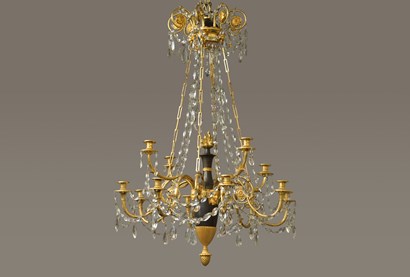
Hoffmans Antiques
Chandelier in the 'Retour d’Égypte' style Paris, early 19th century Attributed to Benjamin Ladouèpe-Dufougerias and the 'Manufacture de Cristaux de Montcenis' Ormoulu, patinated and fire-gilt bronze for twelve candles H 130 cm - Ø circa 80 cm Provenance: private European collection This magnificent chandelier exemplifies the short-lived yet influential 'Retour d’Égypte' style, which emerged in the wake of Napoleon’s Egyptian campaign (1798–1801). At its centre stands an amphora-shaped patinated urn, crowned with a flaming finial and surmounted by a pinecone. From the urn’s body spring twelve elegantly curved candle arms arranged in two tiers, richly ornamented with foliage motifs and set between four stylised Egyptian masks. The chandelier is suspended by four chains leading to an imposing corona adorned with leonine masks and voluted floral decoration. The style was largely shaped by the architects Charles Percier and Pierre François Léonard Fontaine, whose neoclassical designs laid the foundation for this decorative vocabulary. It endured only briefly before giving way to the Empire style with the establishment of Napoleon and the First French Empire. Provenance and Comparanda: A closely related chandelier for twelve lights, attributed to the Manufacture de Cristaux de la Reine, is preserved in the collections at Versailles, formerly installed in Marie-Antoinette’s inner cabinet at the Petit Trianon.
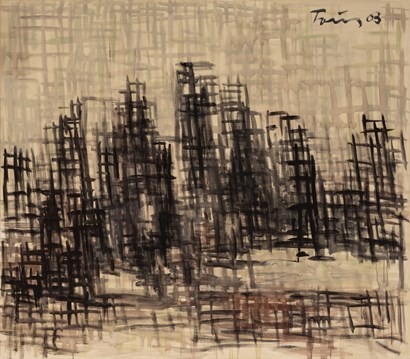
Patrick Derom Gallery
günther förg
Günther Förg (Füssen 1952-2013 Freiburg) Untitled, 2003 Acrylic on canvas 140.5 x 160.5 cm Signed and dated upper right ‘Förg 03’ This work is registered in the archives of the Günther Förg Estate under number WVF.03.B.0242 Provenance: Alcalá Subastas, Madrid, 12 May 2011; private collection, Madrid; private collection; sale Christie’s Amsterdam, 8 April 2014, lot n° 74; private collection, Belgium Exhibition: 2003-2004, Galerie Heinrich Ehrhardt, Madrid, 18 November 2003-30 January 2004, Günther Förg

Collectors Gallery
ettore sottsass
Ettore Sottsass (Austria, Innsbruck 1917-2007 Milan, Italy) 18ct gold ring, 1984-1986 Ring with a long rectangular table featuring a black onyx disc and diamonds Designed by Sottsass for Cleto Munari, Milan Produced in an edition of 9 Provenance: private collection, London Literature: Radice 1987, p. 78; Vezzosi 1990, p. 105
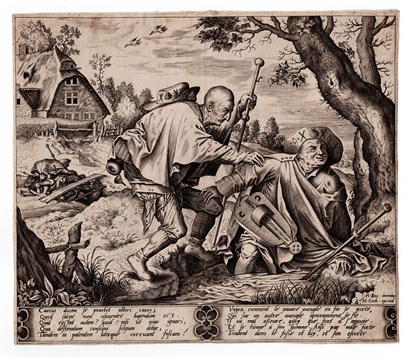
Chambre professionnelle belge de la Librairie Ancienne et Moderne (CLAM)
Hieronymus Bosch ('s-Hertogenbosch, circa 1450-1516) Parable of the two blind men, circa 1540-1570 Engraving by Pieter van der Heyden (circa 1530-1572) Published by Hieronymus Cock (Antwerp, 1518-1570) 22.2 x 22.5 cm References: New Hollstein Dutch 20 1(5), first state Lex Antiqua, Antiquarian printseller
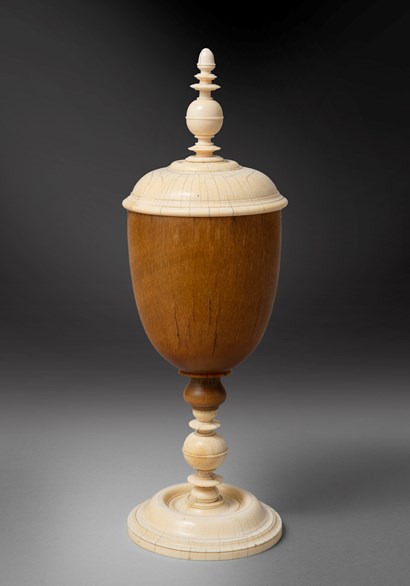
Finch & Co
Turned standing cup and cover on knopped foot Germany, late Renaissance, first half 17th century Rhinoceros horn and ivory, old smooth patina, age cracks to foot H 33 cm - Ø 11 cm Belgium CITES: 2025/BE01678/CE Provenance: Finch and Co, item n° 77, catalogue n° 20, summer 2013; private collection Comparative literature: a cup and cover of similar shape engraved with the inscription ‘the exalted Roman Emperor Rudolf II’s goblet which protects against poison – the unconquerable Emperor’s hand shaped this ingenious goblet’ D 406.766 / 339 Royal Danish Kunstkammer, Copenhagen, National Museum A fine and large late Renaissance turned standing cup and cover on knopped foot of impressive size The Milanese master instructor of turning Giovanni Ambrogio Maggiore visited Bavaria on various occasions between 1574 and 1593 to teach the Duke Wilhelm this newly invented form of art, creating marvellous objects from natural substances. Maggiore also trained the artist Georg Wecker who went on to become Dresden’s ‘court turner for life’ to the elector Augustus of Saxony in 1578. Regarded at the time as a form of advanced mechanical technology, the art of turning in ivory, ebony and rhinoceros horn became a princely pastime for ‘Drechselnder souverän’. Rhinoceros horn objects were regarded as items of great rarity and prestige in Renaissance Europe, but they had been seen as objects of great value with inherent magical properties for well over one thousand years before this time in China, and by the early 17th century Chinese cups and vessels of carved rhino horn were being exported to Europe to meet the demand for exotic curiosities for the cabinets of wealthy collectors.
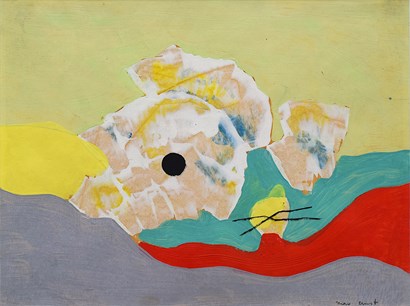
Galerie des Modernes
max ernst
Max Ernst (Brühl 1891-1976 Paris) Fleur de coquillage, circa 1932 Gouache on paper 23 x 30.7 cm Signed lower right 'max ernst' Certificate of authenticity by Mr. Werner Spies dated 29 November 2007 Provenance: Edward Weston collection, Carmel Highlands; Galerie Tarica, Paris; Galerie Heyram-Mabel Semmler, Paris; Galerie des Modernes, Paris; private collection, France
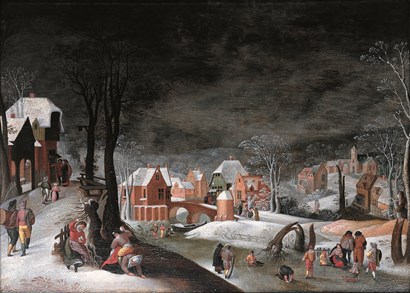
Galerie Florence de Voldère
jacob grimmer
Jacob Grimmer (Antwerp, 1525-1590) Winter landscape Oil on panel 37.3 x 51 cm Provenance: Antonie Palamedes Stevens (1601-1673), painter and collector; private collection, Austria; sale Versailles, 1937; private collection, Paris; sale Galliera, Paris, 29 November 1973 n° 20,21,22,23; private collection, Brussels Literature: R. de Bertier, Jacob et Abel Grimmer, 1991, ill. pp. 104-108 Received as a master of the Guild in 1547, Jacob Grimmer is amongst the great pioneering painters in the history of Northern painting. A contemporary of Pieter Bruegel the Elder, he shared with him a passion for nature; like him, he painted from life, and his works are filled with realism and genuine emotion. It is through the recurring theme of the seasons in his work that Jacob Grimmer expresses his innovative vision of the landscape, where shifting atmospheric moods adapt to everyday and secular scenes.
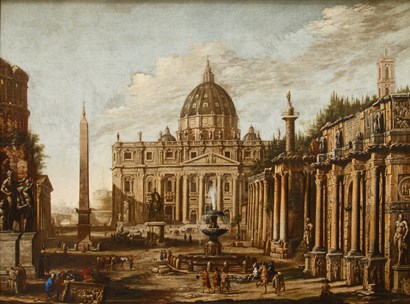
Ars Antiqua
viviano codazzi and jan miel
Viviano Codazzi (Italy, Bergamo 1604-1670 Rome) and Jan Miel (Belgium, Beveren 1599-1663 Turin, Italy) Architectural Capriccio with a View of Saint Peter's Basilica and Classical Antiquities First half of the 17th century Oil on canvas 149 x 200 cm Authenticated by Professor Alessandro Agresti

Galerie Cento Anni
andré lanskoy
André Lanskoy (Moscow 1903-1976 Paris) Un cas suspect, 1964 Oil on canvas 97 x 146 cm Signed and dated 'Lanskoy 64' Provenance: Galerie de Seine; private collection, Paris Certificate of authenticity from the Comité Lanskoy dated 4 April 2025 This work will be included in the forthcoming catalogue raisonné currently in preparation

Gilden's Art Gallery
Gino Severini (Italy, Cortona 1883-1966 Paris, France) The dancer, 1959 Tempera painting on wove paper 39.5 x 28.5 cm Signed lower right 'G. Severini' and dedicated in pencil ‘al caro vecchio amico Raffaele Carrieri, affectuoso riccordi di Gino Severini’ [to a dear old friend Raffaelle Carrieri, with affectionate memories, Gino Severini] in the lower right corner The work comes with a photo-certificate of authenticity by Romana Severini Brunori dated 13 May 2025 Provenance: the celebrated poet Raffaele Carrieri (1905-1984); private collection, Milan
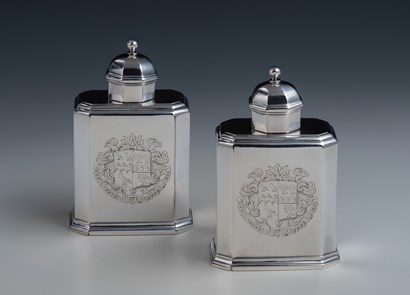
Kunsthaus Kende
Pair of George I Britannia silver tea caddies John Farnell, London, 1720 Engraved sterling silver H 12.5 cm 240.3 g and 237.4 g Provenance: private collection, North America The smooth, octagonal body merging into the correspondingly smooth shoulder. The lid finished with a twisted baluster. The base, which can be pulled out for filling, is only marked with a maker’s mark, the lid is unmarked. The bodies are hallmarked on the underside of the back. The contemporary coat of arms engraved on the front commemorates the marriage of a gentleman of the Dove family (who were based in East Burgholt in the county of Suffolk) and a lady of the Pierse family (whose family was based in Alston in the county of Warwickshire). An attractively preserved, early Britannia silver pair of tea caddies with a beautifully preserved, original surface.
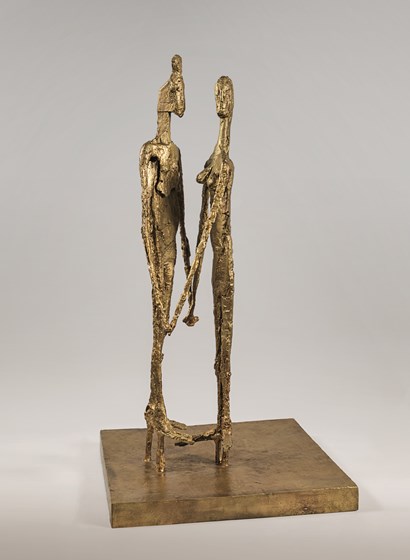
Galerie de la Béraudière
germaine richier
Germaine Richier (France, 1902-1959) Le Couple, 1956 Natural bronze Fonderie Susse, Paris Lost wax cast (except for the base and arms, sand casted) H 139 x W 74.5 x D 74.5 cm Signed and numbered on the terrasse: G. Richier, 3/6 Edition 3/6 out of 11 (1/6 - 6/6 + HC1-HC2-HC3 + EA + 0/6) Posthumous cast: 1963 Provenance: Galerie Creuzevault, Paris; private collection, France; Galerie Cazeau-Béraudière, Paris; private collection, France; private collection, Belgium Literature: Jean-Louis Prat et Françoise Guiter, Germaine Richier, Rétrospective, Saint-Paul-de-Vence, Fondation Maeght, 1996, p. 172, ill. (another cast); Maîtres des XIXe et XXe siècles, Galerie H. Odermatt-Ph. Cazeau, Paris, 1989, repr. n° 46; Eddie Wolfram et William Packer, London, art and artist, Londres, juillet 1973, n° 8, pp. 46-49; Germaine Richier, Galerie Creuzevault, Paris, 1966 Exhibitions: 2022, Brussels, Galerie de la Béraudière, Germaine Richier et la couleur (this cast); 1996, Saint-Paul-de-Vence, Fondation Maeght, Germaine Richier, Rétrospective (another cast); 1957, Paris, Musée d'Art Moderne de la Ville de Paris, XIIIe Salon de Mai, n° 27, ill. (another cast); 1956, Paris, Musée National d'Art Moderne, Germaine Richier, n° 13, referred as 'Figures' (another cast); Jean Cassou, Richier, Editions du Temps, Paris, 1961; René de Solier, Germaine Richier, in Les Cahiers d'art, Paris, juin 1953, n° 28, pp. 123-129 With Le Couple, Germaine Richier reached a point of fulfilment in her exploration of the human figure and its metamorphoses. The two figures, united by a skilful interplay of triangles and balances, seem caught in a silent movement where tension becomes harmony. The rigour of the construction is combined with an organic, almost primitive energy that animates the bronze with a vibrant presence. Le Couple embodies this rare alliance between construction and emotion, where the bronze material seems to be animated by a vital breath.
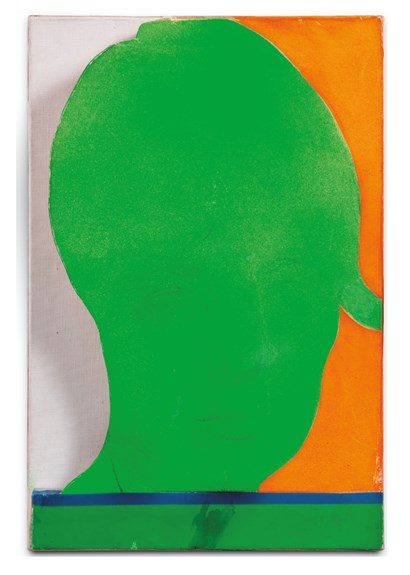
Galerie Jean-François Cazeau
martial raysse
Martial Raysse (Nice, 1936) Green on green, 1964 Spray paint, xerography, collage, oil and cardboard mounted on canvas 33 x 22 x 7 cm Signed Martial Raysse, dated 64 and titled Green on green (on the reverse) This work is registered in the inventory 'l'Oeuvre de Martial Raysse' under n° IMR-0193 Provenance: William Copley Collection, USA; Christie's, New York, Contemporary Art - Including property from the collection of William Copley, 8 November 1993, lot 8; private collection, Paris; acquired from the above by the present owner Exhibition: New York, Galerie Luxembourg & Dayan, Martial Raysse: 1960-1974, 11 May-13 July 2013
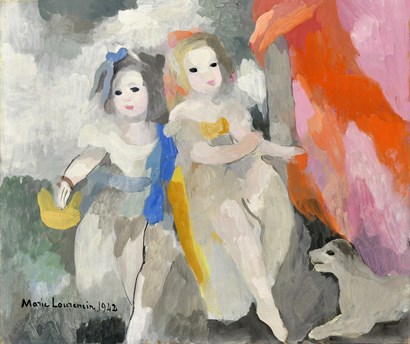
Galerie Taménaga
marie laurencin
Marie Laurencin (Paris, 1883-1956) Deux fillettes et chien, 1942 Oil on canvas 46 x 55 cm Signed and dated lower left 'Marie Laurencin 1942' Provenance: private collection Literature: Beaux-Arts, Paris, 24-30 July 1952; Daniel Marchesseau, Marie Laurencin, Catalogue raisonné de l'œuvre peint, Tokyo: Marie Laurencin Museum, 1986, vol. I, n° 804, repr. p. 327
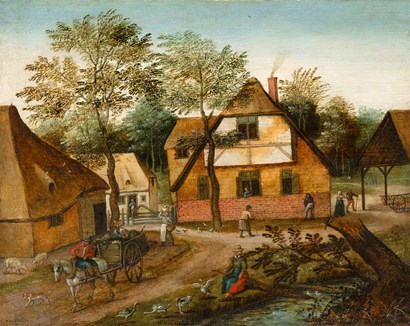
Pelgrims de Bigard
pieter brueghel the younger
Pieter Brueghel the Younger (Brussels 1564-1638 Antwerp) A village scene with a horse-drawn cart and a goose keeper Oil on panel 25 x 31 cm Signed lower left 'P. BREUGHEL' Provenance: collection Kaufmann, before 1934; Kunsthandel P. de Boer, Amsterdam, 1934; collection Van Hees, The Netherlands, until 1969; private collection, The Netherlands Literature: P. de Boer, De Helsche en de Fluweelen Brueghel en hun invloed op de kunst in de Nederlanden, exhibition catalogue, Amsterdam 1934, ill. p. 9, p. 32, n° 32; Pantheon, Monatsschrift für Freunde und Sammler der Kunst, München, 1934, XIII, ill. p. 141; P. de Boer, Catalogus van oude schilderijen, exhibition catalogue, Amsterdam, 1940, ill. n° 8; Singer Museum, Modernen van toen 1570-1630, Vlaamse schilderkunst en haar invloed, exhibition catalogue, Laren 1963, n° 53; Georges Marlier, Pierre Brueghel le Jeune, 1969, pp. 417-418, ill. n° 263; Klaus Ertz, Pieter Brueghel der Jüngere (1564-1637/38), die Gemälde mit kritischem Oeuvrekatalog, Lingen 2000, Vol. II, p. 821, ill. n° 667, p. 824, inv. n° E116 Exhibitions: Amsterdam, Kunsthandel P. de Boer, De Helsche en de Fluweelen Brueghel en hun invloed op de kunst in de Nederlanden, 10 February-26 March 1934, n° 32; Amsterdam, Kunsthandel P. de Boer, November-21 December 1940, n° 8; Laren (N.H.), Singer Museum, Modernen van toen 1570-1630, Vlaamse schilderkunst en haar invloed, 15 June-1 September 1963, n° 53

Galerie Flak
Yup'ik shaman mask Coastal Yup’ik - Eskimo, St Michael or Yukon river Delta, Alaska, 19th century Carved wood, pigments H 19.5 cm Provenance: Karin & Leo (1937-1987) Van Oosterom collection, The Hague, acquired in 1980 Yup’ik shamanic masks (from the Indigenous culture of the Arctic region of Alaska) bear witness to a spirituality and artistic power of remarkable depth. Exceptionally rare today - as most were destroyed or discarded after their ceremonial use - these works are imbued with mystery and poetry. Their evocative force and symbolism of metamorphosis deeply inspired Surrealist masters such as Max Ernst and Leonora Carrington, who discovered in them a new visual language of the unconscious. This striking mask represents a tunghak spirit - a powerful celestial being linked to the moon, the sun, and the balance between humans and nature.
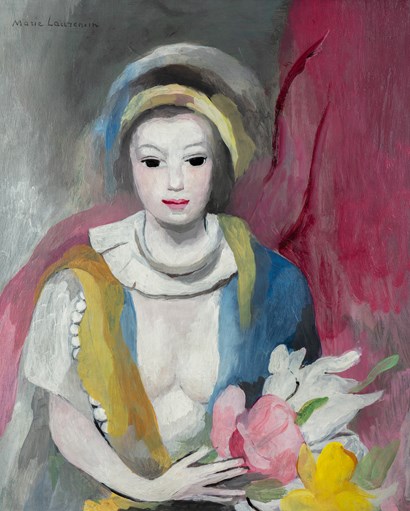
Brame & Lorenceau
marie laurencin
Marie Laurencin (Paris, 1883-1956) Jeune fille au bouquet de fleurs, circa 1935-1940 Oil on canvas 61 x 50 cm Signed upper left Provenance: private collection Literature: Daniel Marchesseau, 'Marie Laurencin, Catalogue raisonné de l’Œuvre Peint', 1986, Éditions du Musée Marie Laurencin, Japon, 1986, n° 1150, repr. B&W

CKS Gallery
nicolas de stael
Nicolas de Staël (Saint Petersburg 1914-1955 Antibes) Composition, 1949 Oil on canvas 200 x 100 cm Provenance: private collection of the artist Literature: Françoise de Staël, Nicolas de Staël, Catalogue Raisonné de l'oeuvre peint, Paris, 1997, n° 203 Exhibitions: Hôtel de Caumont, Aix-en-Provence, 27 April-23 September 2018, Nicolas de Staël en Provence; Château Grimaldi d’Antibes, 17 May-7 September 2014, exhibition La figure à nu, hommage à Nicolas de Staël; MuMa – Musée d’Art Moderne André Malraux, Lumières du Nord, Lumières du Sud, 7 June-9 November 2014; Académie Royale des Beaux-Arts de Bruxelles, Belgium, 2012, for the 300th anniversary of the Académie Royale where de Staël studied from 1931 to 1934, 9 May-2 June 2012; Fondation Gianadda de Martigny, Switzerland, retrospective of the work of Nicolas de Staël, 18 June-21 November 2010; Centre Pompidou, Nicolas de Staël 1945-1955, Paris, 12 March-30 June 2003; Musée d'Art Moderne, Paris, Retrospective Nicolas de Staël, 15 September 2023-21 January 2024; Fondation de l’Hermitage, Lausanne, Nicolas de Staël Exhibition, 9 February-9 June 2024
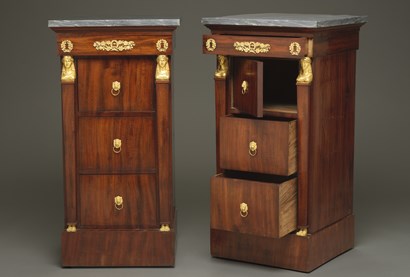
Hoffmans Antiques
Pair of side cabinets Paris, circa 1800 Walnut, mahogany, and mahogany veneer with gilt-bronze mounts, grey Bardiglio marble tops H 88 x W 45 x D 44 cm In the manner of Luigi and Antonio Manfredini, Paris Provenance: private European collection This pair of neoclassical cabinets reflects the refined elegance of early 19th-century Parisian design. Each cabinet combines function with ornament, comprising drawers, a cupboard, and a concealed drawer. The gilt-bronze mounts feature central lion masks and Egyptian-inspired motifs, a reference to the vogue sparked by Napoleon’s Egyptian campaign. Topped with slabs of grey Bardiglio marble, the cabinets blend practicality and decorative sophistication.

Gallery de Potter d’Indoye
Mantel clock depicting the fall of Phaeton Ormoulu bronze France, Consulat period, circa 1800 H 80 x W 53 x D 19 cm Provenance: collection of Robert de Balkany, Paris Literature: Hans Ottomeyer and Peter Pröschel, Vergoldete Bronzen, Munich, 1986, pp. 354-355, n° 5.9.4.; Marie-France Dupuis-Baylet, L’Heure, le Feu, la Lumière, les Bronzes du Mobilier National 1800-1870, 2010, Ed. Faton, p. 26 n° 1; Marie-France Dupuy-Baylet, Napoléon 1er et les Arts décoratifs. Trésors des palais impériaux, exh. cat. 2013, Macao, Museum of Art, n° 1, pp. 34-35; Thierry Sarmant, Palais disparus de Napoléon : Tuileries, Saint-Cloud, Meudon [exhibition, Paris, Galerie des Gobelins, 15 September 2021 to 15 January 2022], Paris : In fine, 2021; Adrien Goetz, Ambroise Tézenas, Résidences présidentielles, Paris : Flammarion, 2021, p.173 The subject of this clock illustrates the episode in which Jupiter strikes Phaeton with a thunderbolt. Phaeton wanted proof that he was the son of the Sun, (Helios). Phaeton then asked his father to let him drive his chariot. Terrified by the height and the sky, Phaeton veered off course and descended so low that he scorched the Earth. The maddened stars complained to Jupiter, who struck the chariot and Phaeton. 'The terrified horses leap in a large circular movement with pin-wheel escapement mounted on the backplate, the pendulum crutch with fine-screw beat adjustment, and outside countwheel strike on a bell, the canthmechanism showing seconds with original hands'. The bronzier Pierre-Etienne Romain (1765- after 1821) deposited the drawing of a Clock representing the same subject in the cabinet of drawings of the National Library in March 1800. Related works: The Mobilier National keeps three clocks representing this subject: one found at the Tuileries Palace in 1809, another at Ministry of Foreign Affairs, and the third at the Palace of Saint Cloud in 1818, then at the Elysée Palace.

